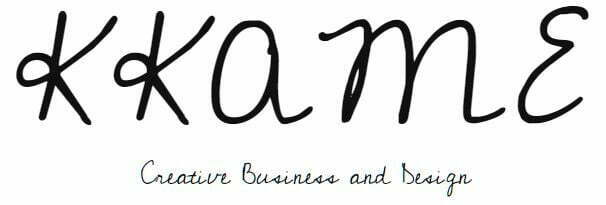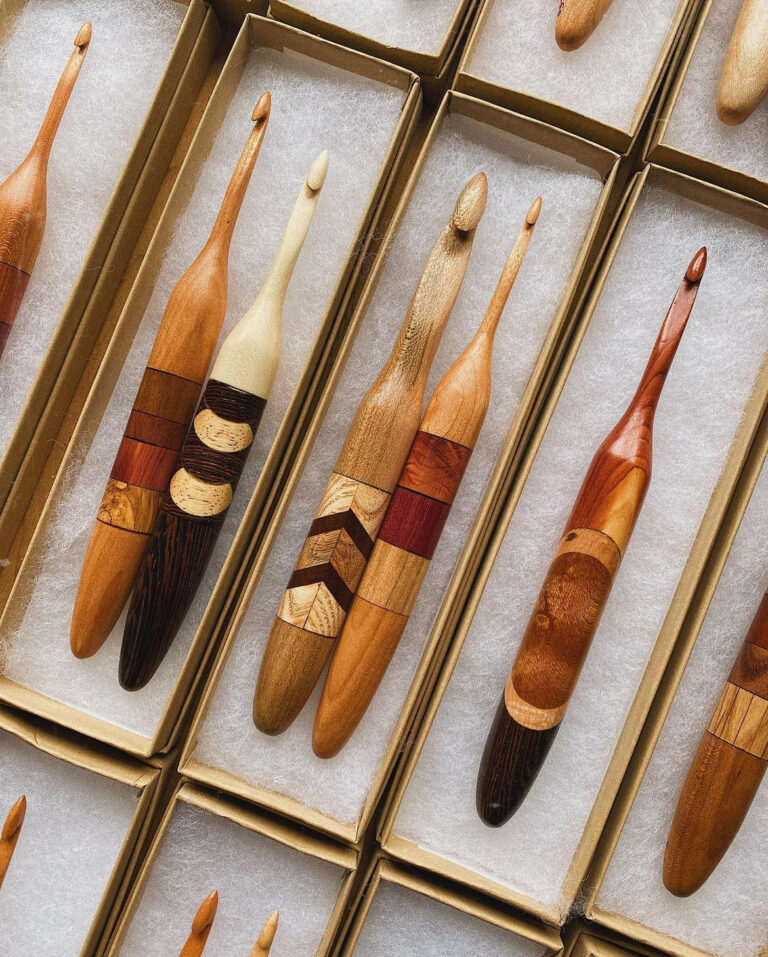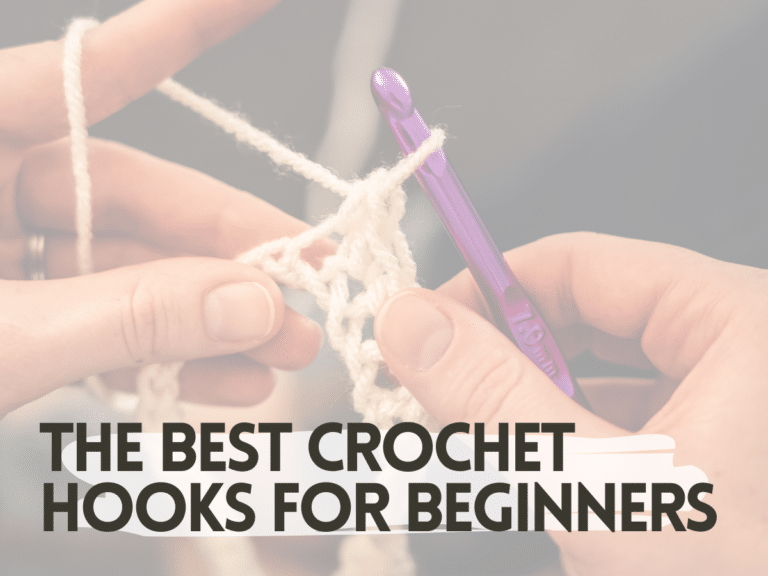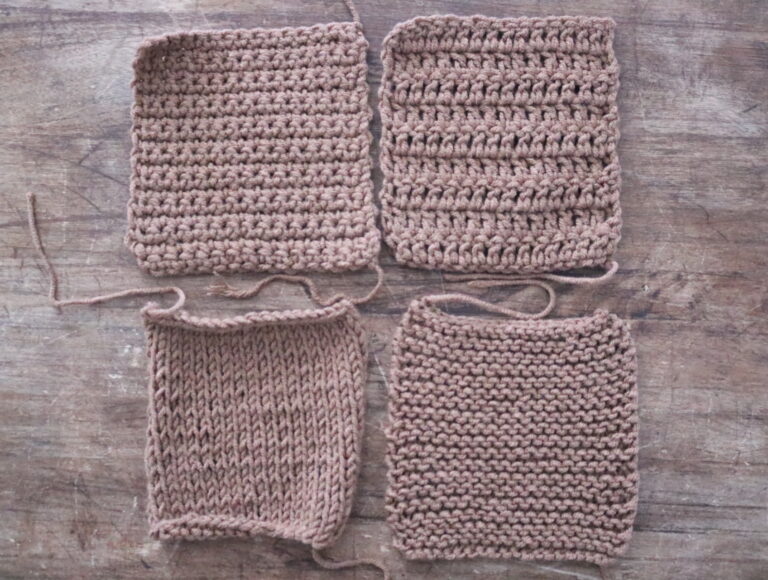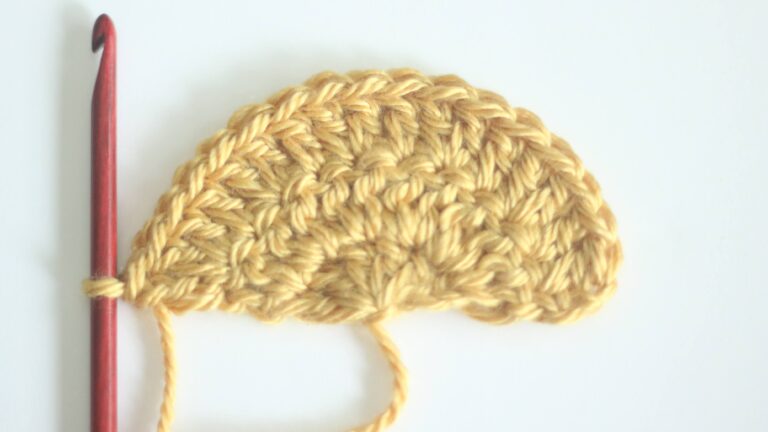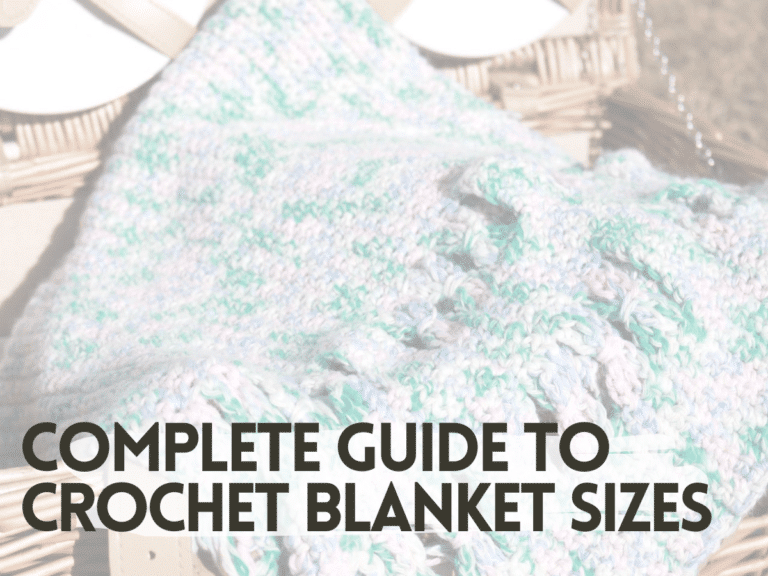How to Hold a Crochet Hook and Yarn for Beginners
When learning how to crochet, the biggest struggle is actually learning how to hold a crochet hook and yarn. Proper technique not only makes crocheting more comfortable but also helps you achieve more consistent and polished stitches. In this guide, we’ll walk you through the basics of holding a crochet hook and yarn, perfect for beginners eager to embark on their crochet journey.
I have been asked quite a few times to explain how I hold my hook and yarn when crocheting. The truth is, everyone will crochet differently and what works for them, there is no wrong way to do it. My way is not unique and is just what made sense and is what was comfortable for me.
Two main ways of holding yarn and hooks
Here are the common ways people hold yarn. Both are effective and ways and there are no right or wrong way. It is so important to learn how to hold your crochet hook and yarn to get the right tension and to avoid unnecessary strain on your hands and wrists. Though, wrist pain is inevitable if you are constantly crocheting and up against deadlines, remember to stretch regularly and take breaks.
Knife Grip – You may notice that a lot of crocheters hold their hooks in a knife hold. Hold the hook like you would hold a knife while cutting food. Grip the handle of the hook with your thumb and index finger, while the other fingers support the hook from underneath. This grip provides more power and is suitable for working with bulkier yarn or when you need to exert more force. I have tried a knife grip and I personally find that it is a lot for my wrists and requires much more movement. Since I do not cook that much, holding it this way does not feel very natural to me.

Pencil Grip – I use a pencil grip to hold my yarn. This type of hand positions are second nature to us as well all know how to write. Hold the hook as you would a pencil, with your thumb and index finger gripping the shaft of the hook, and the other fingers supporting it lightly. This grip allows for greater control and precision, making it ideal for intricate stitch work. Using a pencil hold (or pincer grip) is the most comfortable way for me to crochet and I find it feels very light, a lot more control, and easiest on my wrists. This is what we are going to dive into a little more.
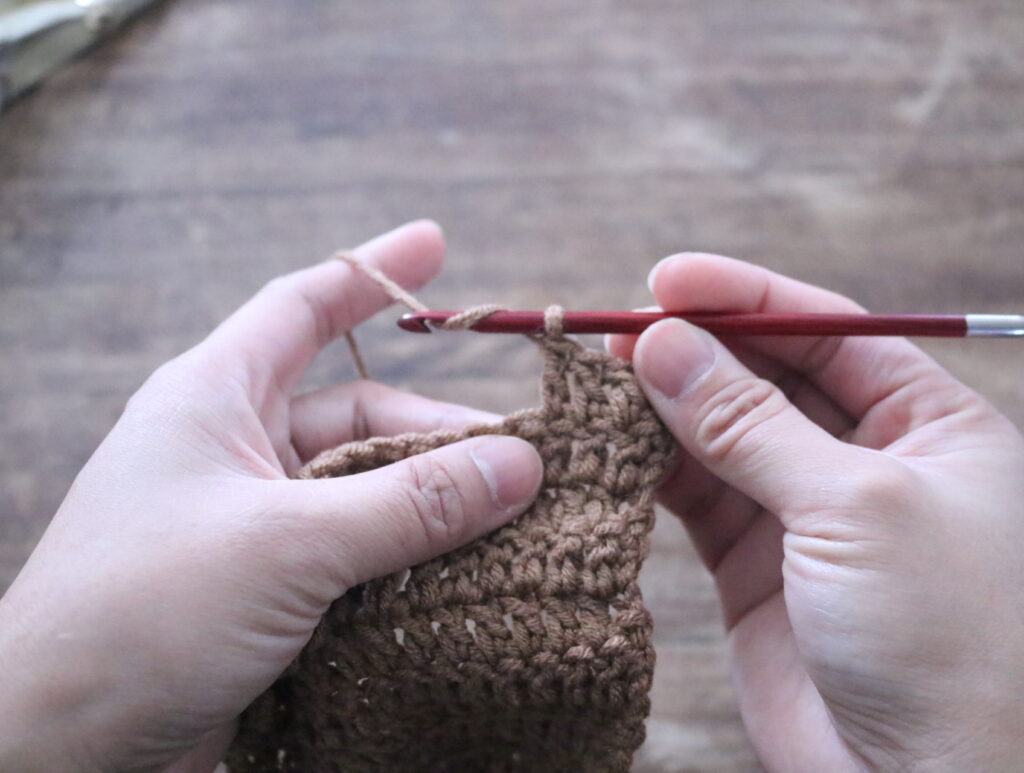
Pencil Grip Way
The easiest way to hold a hook for beginner crocheters, in my opinion, is like a pencil. This is because we all know how to write and just used to it. When using a pencil grip our hand is at rest and it is just a really comfortable way of crocheting. Please take note that this tutorial is demonstrated for right handed people. However, if you are left handed, simply switch the instruction.
For the Pencil grip hold, your left hand (non-dominant hand) holds the yarn and crochet piece.
Leaving a tail end, wrap yarn around pinky finger once. Continue draping the yarn behind the hand. Extend your index finger outwards as the yarn comes around the top of your pointer finger. Middle finger, ring finger, and thumb rests on the stitch placement and holds on to the crochet piece.
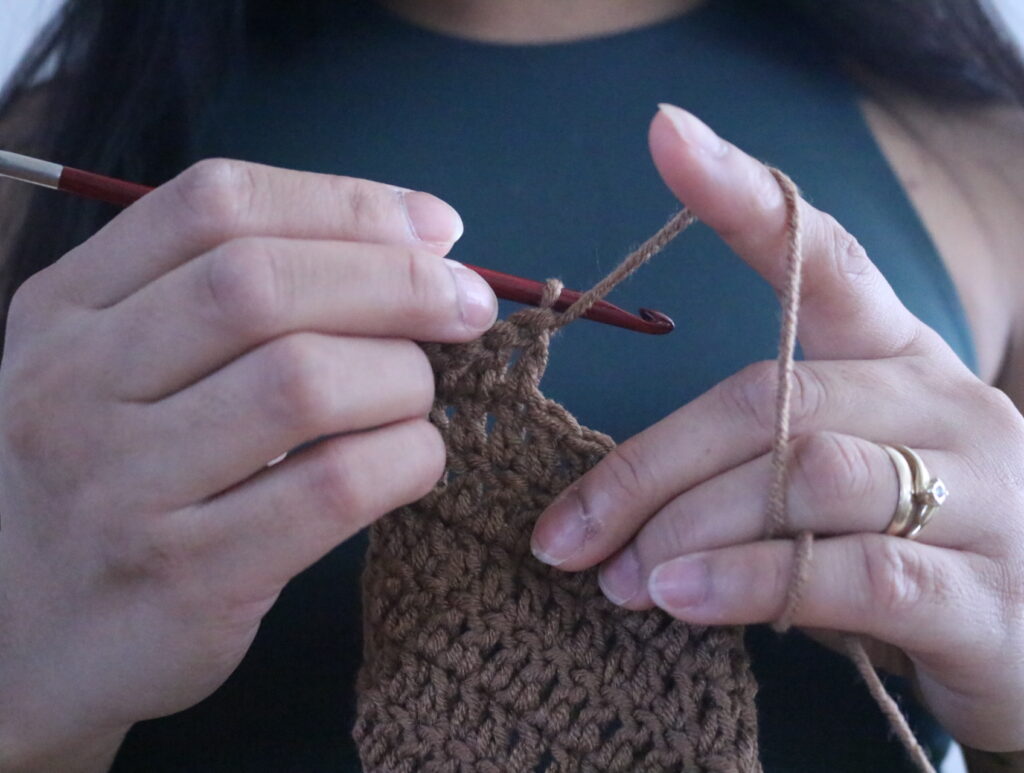
*note: I know this picture above shows my hook facing upwards. Please be reminded that when crocheting I always have it pointing downwards. This photo was to show how the yarn is held in the non-dominant hand and not how the a crochet hook should be held.
Wrapping the yarn once around the little finger sets up the tension of your yarn and directs the flow of yarn. If you are a loose crocheter and feel like you need a little more tension, instead of wrapping again, press the pinky closer to the ring finger to squeeze the flow of yarn a little more until I get the proper crochet tension.
Having the index finger extended creates a guide for your working yarn and helps in keeping the perfect yarn tension. When set up correctly, the working yarn glides smoothly and controlled as you stitch along.
Moving on to the right hand (dominant hand) which holds the hook.
I basically hold the hook like a pen because this is what feels the most natural for me. It is easy on my wrist and allows my hand to move freely and gently. My hook is always facing down. By having my hook face down, it grabs on to the working yarn and pulls through easily.
Factors that affect how you hold your crochet hook
The yarn weight and your chosen hook size also play into how you might hold your crochet hook and yarn. You can read my post about the different types of crochet hooks here.
Thicker/rounder hooks may feel awkward to hold in a pencil grip. An example of these hooks are like Furls Crochet hooks or resign hooks. In this case I gravitate towards more of a knife grip for extra thick hooks. The size of your hook will depend on the thickness of your yarn and the tension you want to achieve in your work. Beginners often find it helpful to start with a medium-sized hook, such as an H/8 (5.00mm) or G/6 (4.00mm), which is versatile enough for a wide range of projects. For the sake of this explanation, I am talking about working with the more common weight of yarn like dk weight and worsted weight yarn with common hook sizes such as 3.5-8mm hooks.
There are also also ergonomic crochet hooks that hand built in hand supports. I personally do not like these hooks that much and tend to hold them more like a larger hook since the body of the hook tends to be a lot bigger. Though, smaller hooks with subtle ergonomic accommodations are okay for me like the Amour Crochet Hooks.
Just like the size of a hook, your yarn size will affect how you will hold your yarn. For example, extra bulky yarn can be difficult to hold. in this case you might want to practice a no-tension method wherein you simply hold the yarn in your non-dominant hand without creating tension. This method is more relaxed and allows for greater freedom of movement but may require more practice to maintain consistent tension in your stitches.
Trouble holding yarn and crochet hook?
After a lot of practice and you still find yourself struggling with holding the crochet hook and yarn, try these tips for common problems:
- Hand Cramping: Take regular breaks and stretch your fingers and wrists to prevent strain. Experiment with different grips and hand positions to find what feels most comfortable for you.
- Uneven Tension: Inconsistent tension in your stitches can lead to a lumpy or misshapen finished project. To improve your tension, practice maintaining a steady rhythm as you crochet and pay attention to how tightly you hold the yarn. Relax your grip and try to keep your movements fluid and consistent. Remember to practice making swatches and achieving gauges before jumping into any pattern.
Now you know how to hold a crochet hook and yarn!
Like any skill, mastering the art of holding a crochet hook and yarn takes practice. Don’t be discouraged if it feels awkward or clumsy at first—keep practicing, and soon it will become second nature. Start with simple stitches like the chain stitch or single crochet, focusing on maintaining even tension and smooth movements. As you gain confidence, you can experiment with more advanced stitches and techniques, knowing that you’ve mastered the basics of holding your crochet hook and yarn.
Bottom line is, there are different ways to hold with yarn but the most important thing is how your hands and wrists feel when crocheting. Learning how to hold a crochet hook and yarn is the first step on your crochet journey. By choosing the right hook, experimenting with different grips, and practicing your tensioning technique, you’ll soon be on your way to creating beautiful crocheted masterpieces. Be patient, practice, and it will eventually become muscle memory. Make sure you are comfortable and have fun!
Until next time my maker friend!
xoxo
Abigail
